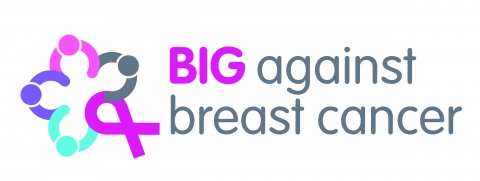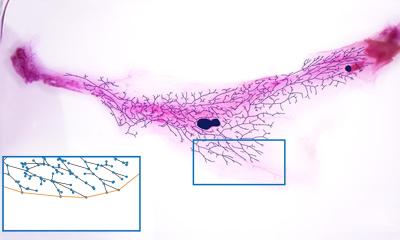News • Research network
40% of women with breast cancer live in Asia
The Breast International Group (BIG), an international not-for-profit organisation that represents the largest global network of academic research groups dedicated to finding cures for breast cancer, is welcoming three new members in East Asia: the Breast Disease Professional Committee of CMEA (BDPCC), China; the Korean Cancer Study Group (KCSG), South Korea; and the Thai Society of Clinical Oncology (TSCO), Thailand.
BIG is already present in Hong Kong, Japan, Singapore and Taiwan. The network encompasses 59 collaborative member groups worldwide, representing more than 10,000 breast cancer experts present across the six continents.
Breast cancer research in East Asia – challenges and opportunities
Breast cancer incidence in East Asia has been moving ever closer to that in western populations. Today, 40% per cent of women with breast cancer live in Asia, and the growing interest in research by breast cancer specialists across the region has the potential to speed up advances in treatment for patients at both local and global levels. In the 20 years since BIG was established, Asian researchers have more than tripled their contribution to the organisation’s registration studies, from 9% to 30% of participants, and there is a strong commitment to increased participation in purely academic studies too. “This is very good news for women with breast cancer because when these studies produce results that change clinical practice, we know that their findings are as meaningful for those living in Asian countries as in other parts of the world,” explains BIG Chair, Professor Martine Piccart[2], who co-founded BIG in 1996.
Dr. Piccart highlights the advantages of the very high quality of data from South Korean and other East Asian researchers, and the potential of greater input from Chinese investigators: “Working with our new Chinese members, and in particular with their advanced technologies, can bring opportunities to translational research. We are convinced that our joining efforts in international collaboration is the way forward to advance research more rapidly and efficiently and, most importantly, help more women and men affected by the disease, wherever they live.” She adds: “Providing us with rigorously collected and robust data is greatly appreciated because it significantly reduces the bureaucratic burden of running a large international trial. We look forward to increasing the involvement of Asian research groups as participants in international studies, but also in developing and running them.”
BIG - Thinking globally, acting locally

To fight breast cancer, it is necessary to tackle common global challenges while being aware of the specific needs of each population and using all the expertise, knowledge and resources available. BIG represents a large international and inclusive network of breast cancer professionals, which is exactly the platform needed to think globally and foster research collaborations to help patients worldwide. The organisation recently initiated an important shift, not only by welcoming new academic research groups, but also by adapting its governance structure with an Executive Board that better reflects the geographical extent of the organisation, as well as the broad range of expertise among its members.
BIG was founded as a network of collaborative groups in 1999 to address fragmentation in European breast cancer research. However, groups from other parts of the world rapidly expressed interest in joining BIG, and it now represents 59 like-minded research groups from around the world and reaches across more than 50 countries and 6 continents. BIG connects thousands of hospitals and world-class breast cancer experts who collaborate on pioneering breast cancer research. BIG’s mission is to facilitate and accelerate breast cancer research at an international level, acting both globally AND locally, and helping breast cancer patients from all over the world.
Prioritising Asian needs for breast cancer research
As approximately half of the women who get breast cancer in Asian countries are premenopausal, researchers are urging to have more trials carried out in this group of women. Greater participation of Asian countries in the small number of studies of premenopausal breast cancer that are done in western countries wouldspeed up enrolment and results. Also, seeing more international clinical trials designed to de-escalate treatments is especially important for countries and people with fewer resources.
South Korea
Professor Seock-Ah Im, from the Cancer Research Institute at the Seoul National University College of Medicine, South Korea, highlights the need for more international support for investigator-led trials in Asia: “In Korea, we have some of the top-recruiting investigators for clinical trials sponsored by pharmaceutical companies but we find it very hard to get funding for investigator-led trials. We are often advised to join similar studies in Europe or the US and we are very happy to collaborate, but we would also like to secure funding directly so we can initiate some of these studies ourselves.”
China
The need to ‘translate’ advances made in European and US studies into clinical practice in Asia extends to other areas of research. Professor Jiandong Wang, from the General Hospital of People’s Liberation Army (301 Hospital), China, explains that differences in breast density between western and Asian women mean that B-type ultrasound is more sensitive than the X rays typically used for screening in the West, and this needs to be recognised in national guidelines in China.
The second dilemma relates to gene research. Commercial products such as Oncotype Dx, Pam50 and Mammaprint were developed based on western populations, and some are now integrated into our breast cancer guidelines. But how well do they work for Chinese patients? We need to validate these tests or develop new gene panels that we can apply to clinical practice in Asia,” says Professor Wang.
For Dr. Janice Tsang, Founding Convenor of the Hong Kong Breast Oncology Group (HKBOG), another important issue for breast cancer research in Asia is the ageing population. Hong Kong has become the city with the greatest longevity in the world, and older Chinese people tend not to seek help when they are ill because they do not want to be a burden to their families, as reflected by a recent review from the Hong Kong Breast Cancer Registry. In addition, oncologists may fail to offer more intensive treatments to older patients, even when they are otherwise fit and healthy, with age being the usual factor determining the intensity of standard treatment. Yet, research has shown that older women are more likely to accept chemotherapy if molecular profiling and other tests suggest that they have a high-risk breast tumour.
“We need to engage elderly patients so that they will present early, instead of hiding from doctors or their family members, and ensure that they get information about their tumour that will help them make appropriate treatment decisions. This could get around the problem of under treatment of elderly patients, which is common in Asia,” says Dr. Tsang.
Thailand
Professor Virote Sriuranpong, from the Chulalongkorn University and The King Chulalongkorn Memorial Hospital, and President of the Thai Society of Clinical Oncology (TSCO), explains that oncologists in Thailand always follow clinical trial outcomes and guidelines developed in western countries. However, there are differences between West and East in terms of patient ethnicity, drug availability and financial resources.
Professor Sriuranpong would therefore like to see more cost-effectiveness researchfor approved drugs to guide the most appropriate use of limited resources. Research to enable the most appropriate patients to receive more intensive treatment is also high on his list of priorities. “Identifying patients most likely to benefit from different treatment approaches will be important for the development of treatment guidelines and health policy in Thailand,” he says.
Breast Cancer in Asia - Facts & Figures
In 2012, breast cancer was responsible for nine per cent of cancer deaths in East Asia, making it the fourth most common cause of cancer mortality, behind lung, liver and stomach cancers. Although breast cancer rates in East Asia are less than half those seen in Europe and North America, there was a significant rise in incidence between 1980 and 2010. The greatest increase was in South Korea, where the incidence rose by 47.5% from 1999 to 2010. This compared with a 30.8% increase in China (including Hong Kong and Shanghai) between 1988 and 2002, and a 12% rise in Japan between 1983 and 20021. The reasons for the dramatic rise in breast cancer incidence in several East Asian countries, including Singapore, are still unclear, although this is often attributed to ‘westernisation’ of diet, and lifestyle changes.
Large studies have shown that breast cancer occurs at a younger age in many parts of Asia, with a median age at diagnosis of 49-50 years in South Korea, Singapore, Malaysia, Hong Kong, China, and India, compared to 57 years in Japan. The incidence among younger women in Singapore is surpassing that in the US and this has led to greater emphasis and interest in understanding the epidemiology and biology of Asian breast cancers. Globally, an estimated one in three women with breast cancer are diagnosed under the age of 50, compared to 42% throughout the Asia-Pacific region and 47% in South-East Asia, rising as high as 55% in South Korea.
Genetic and other risk factors have been proposed to account for the different age at diagnosis, and different genetic polymorphisms have been reported between Asian and Caucasian women with breast cancer, but more data are needed, especially in relation to BRCA1/2 prevalence. Treatment of breast cancer is similar in East Asia to that in Europe and North America, though breast cancer mortality in East Asia is below the world average. However, mortality rates increased steadily in Korea, Japan, and Taiwan between 1975 and 2006. Data reported in the late 1990s showed that, at over 80%, five-year survival for breast cancer was highest in Hong Kong and Tianjin in China, Korea, and Japan, followed by Taiwan, Singapore and Shanghai (75-80%).
Source: BIG
07.10.2017











